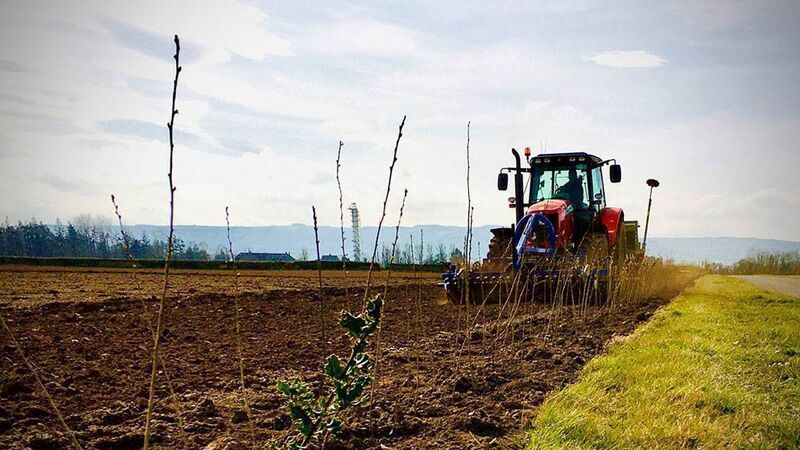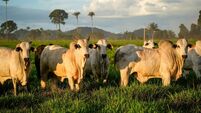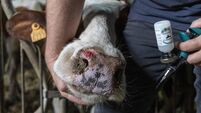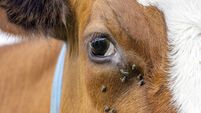Tips for planting a hedge this month to maximise biodiversity

A newly planted hedgerow. Picture: Teagasc
When thinking of planting a new hedge, you must first decide if you want a hedge with a dense base that will be regularly topped OR if you want a line of trees that will never be topped.
There are two distinct hedge types in Ireland. Both types are good, but each requires totally different management. A lack of understanding of each hedge type leads to inappropriate management and damage to hedges. Ideally each farm should have both types of hedges present – to maximise biodiversity benefits.
The secret is to not top an escaped hedge and do not let a topped hedge escape!
In short:
- Escaped (untopped) hedge or treeline: Do NOT top. Side trim only
- Topped hedges: Top to maintain as a hedge – a little above the previous years cut. Aim to grow up to at least 1.5m and retain a new thorn tree in every hedge
Before you plant a hedge it is essential to understand how trees and shrubs grow.
The leader or central shoot of a tree is destined to grow up, causing the tree to develop into a single bole bole stem with a canopy. This occurs because of apical dominance which is the phenomenon whereby the main, central stem of the plant is dominant over other side stems.
When apical dominance is broken by or pruning, lateral and dormant buds just below the cut fight to become the new terminal leader. Hedges are managed habitats and need management to be maintained
Plant native species of native Irish provenance. This means the plants were grown in Ireland from seed collected from Irish trees. Species native to Ireland grown in another country from their seed act differently. Native Irish species are in tune with each other with timing of flowering suiting associated dependent species. Using native provenance hedging stock is better for biodiversity, reduces the health risk to our native trees and hedges. It also supports local rural development.
Trees and shrubs that tolerate or thrive with trimming such as the thorn species – whitethorn, blackthorn and holly are excellent for the structure in hedges and should be the basis for all farm hedges. Such species are the only ones recommended in topped hedges as they are also ideal to provide the occasional mature tree within the hedge without shading out and causing gaps as is common with larger hedgerow trees.
For a topped hedge - Buy 2 year old bare rooted whips, 6 plants per m, mainly whitethorn, but once every 2 m replace one with another hedging species that tolerates trimming such as Blackthorn, Holly, Hazel, Spindle, Guelder Rose, Dog Rose and Woodbine.Therefore for every 100 m of new hedge - buy 550 whitethorn and 50 other species
The escaped or untopped hedge or treeline can contain any of Ireland’s native trees. Large trees are commonly found in our hedges and can be planted in new hedges provided the site is suited to their height when mature. Mid-sized trees may be more suited. Remember – any of these trees must not be topped any stage or it will destroy the hedge and the tree.
Within the Topped hedge, because it is important to allow occasional plants of each of the hedging species such as whitethorn to mature into a hedgerow tree – there may be no need to include additional trees. Frequently where a lot of tree species are included in a new hedge mix, many are subsequently topped and destroyed, and it is also likely that no whitethorn trees are allowed to grow up.
- Mark out the line of the new hedge using wire, twine or lime.
- Cultivate with a digger or mini-digger - to make it easier to plant and give plants a great start.
- Protect roots from drying out during planting by keeping plants in the bag until needed.
- Plant in a double staggered row – with 330mm (just over a foot) between the rows and the same between the plants within the rows – often the length of a boot.
- Plant to the same depth as was previously planted. Don’t bury the stem or expose the roots.
- Firm in.
- Identify a few whitethorns (maybe five per 100m) to be retained as trees and protect with tree guards or shelters Prune all other plants except holly down to an inch or so above ground level with a sloping cut to leave a sharp point.
- Push a four foot or 1.2m wide strip of compostable film or used silage plastic down neatly over the cut stumps.
- Press the edges of the plastic into the ground to hold it down Protect from livestock including rabbits if the aim is to remove that wire in a few years.










